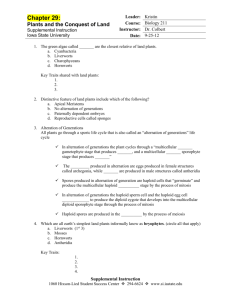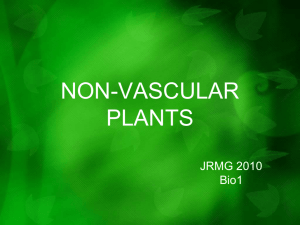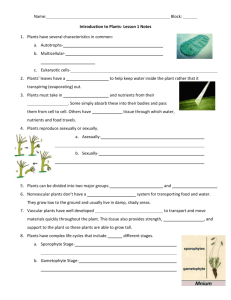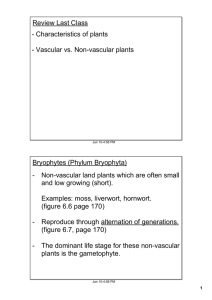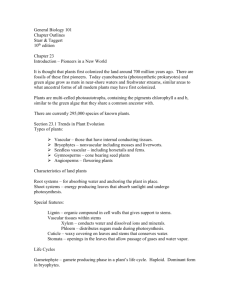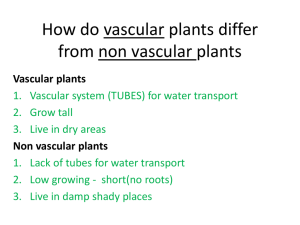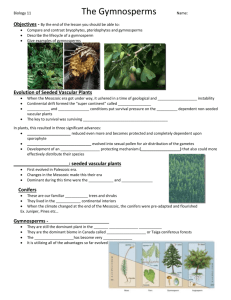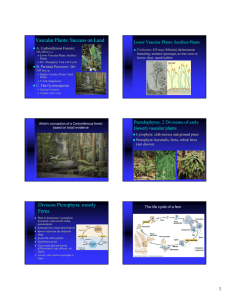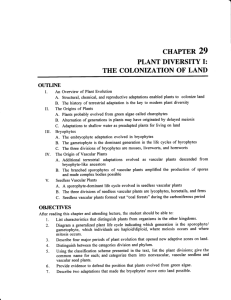Taxonomy and Systematics: Seeking Order Amidst Diversity
advertisement
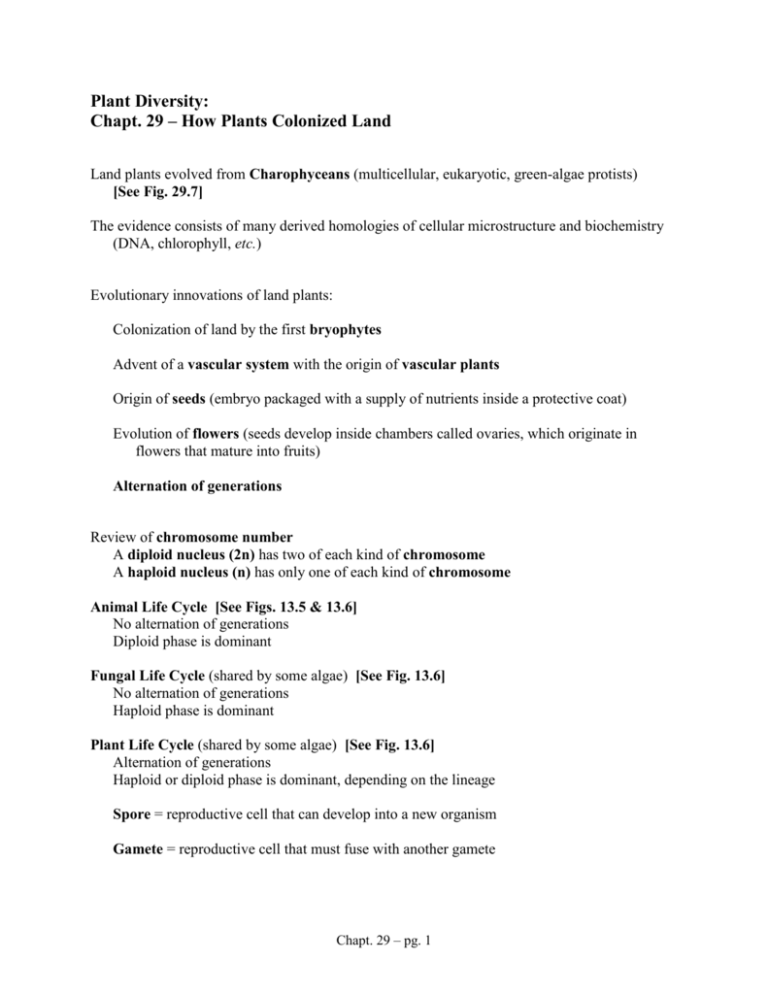
Plant Diversity: Chapt. 29 – How Plants Colonized Land Land plants evolved from Charophyceans (multicellular, eukaryotic, green-algae protists) [See Fig. 29.7] The evidence consists of many derived homologies of cellular microstructure and biochemistry (DNA, chlorophyll, etc.) Evolutionary innovations of land plants: Colonization of land by the first bryophytes Advent of a vascular system with the origin of vascular plants Origin of seeds (embryo packaged with a supply of nutrients inside a protective coat) Evolution of flowers (seeds develop inside chambers called ovaries, which originate in flowers that mature into fruits) Alternation of generations Review of chromosome number A diploid nucleus (2n) has two of each kind of chromosome A haploid nucleus (n) has only one of each kind of chromosome Animal Life Cycle [See Figs. 13.5 & 13.6] No alternation of generations Diploid phase is dominant Fungal Life Cycle (shared by some algae) [See Fig. 13.6] No alternation of generations Haploid phase is dominant Plant Life Cycle (shared by some algae) [See Fig. 13.6] Alternation of generations Haploid or diploid phase is dominant, depending on the lineage Spore = reproductive cell that can develop into a new organism Gamete = reproductive cell that must fuse with another gamete Chapt. 29 – pg. 1 Evolutionary innovations of land plants: Alternation of generations Meiosis occurs in specialized cells to produce spores Mitosis results in gametophyte growth Mitosis occurs in specialized cells to produce gametes Fertilization Mitosis results in sporophyte growth Further Adaptations of Land Plants [See Fig. 29.5] Apical meristems Multicellular, dependent embryos with placental transfer cells The spore mother cells of diploid sporangia produce protected (walled) haploid spores Multicellular, haploid gametangia produce gametes (in all but angiosperms) Archegonium: female gametangium (produces eggs) Antheridium: male gametangium (produces sperm) Characters for conserving water E.g., waxy cuticle coating the epidermis Characters for moving water E.g., lignified vascular tissues (found in all but bryophytes) Phloem and xylem Phylogeny of plants [See Fig. 29.7] Chapt. 29 – pg. 2 I. Non-vascular Plants (Bryophytes) Dominant plants on Earth through the first 100 million years of land plants’ existence II. Vascular Plants A. Seedless Dominant plants in Carboniferous, i.e., today’s fossil fuels B. Seed Plants Dominant plants on Earth today i. Gymnosperms ii. Angiosperms BRYOPHYTES [See Fig. 29.8] Gametophyte dominant; sporophyte dependent; gametophyte independent Gametophytes produce gametes by mitosis A zygote begins the sporophyte generation Mature sporophytes produce spores by meiosis Thin structure allows distribution of materials without vascular system Rhizoids anchor, but do not play a primary role in water and nutrient uptake 3 main clades: Phylum Anthocerophyta - hornworts Phylum Bryophyta - mosses Phylum Hepatophyta - liverworts SEEDLESS VASCULAR PLANTS [See Fig. 29.12] Sporophyte dominant; sporophyte initially dependent; gametophyte independent Gametophytes produce gametes by mitosis Chapt. 29 – pg. 3 Fern prothallus = gametophyte A zygote begins the sporophyte generation Mature sporophytes produce spores by meiosis Sori = clusters of sporangia Homosporous vs. heterosporous spore production [See diagram on pg. 586] Evolution of: Leaves (principal photosynthetic organs of vascular plants) Roots (principal organs that anchor vascular plants and absorb water & nutrients) Vascular tissues (conduits that distribute water & nutrients within vascular plants) 2 main clades (of seedless vascular plants): Phylum Lycophyta - “Club mosses” Phylum Pterophyta 3 main clades (of pterophytes): Horsetails E.g., Equisetum Strobilus – a group of sporophylls forming a cone Whisk ferns Ferns Terrestrial species are found on the ground Resurrection fern is an epiphytic example, i.e., it grows on other plants NOTE: The file “LifeCycles.pdf” is also available for download from the course website as a study guide of animal, fungal, and plant life cycles. Chapt. 29 – pg. 4
